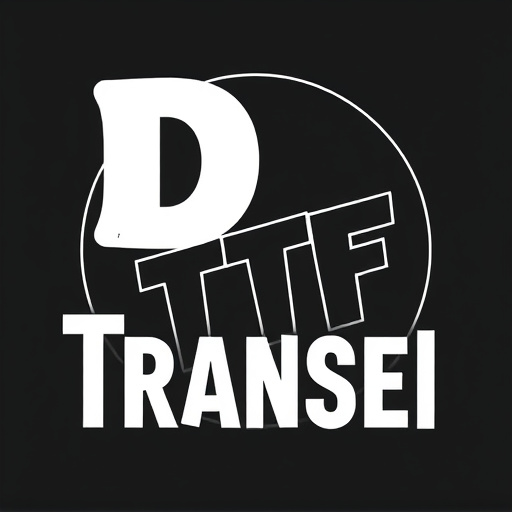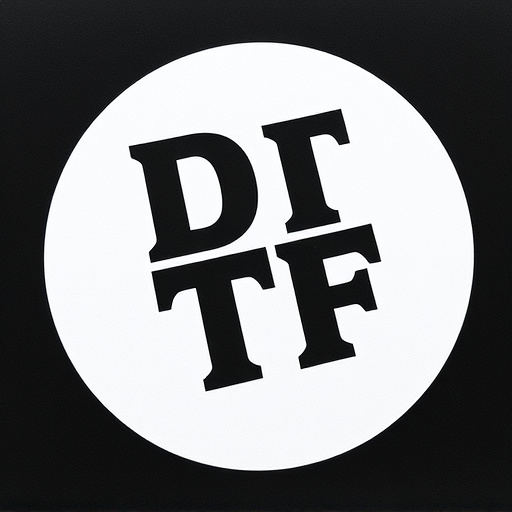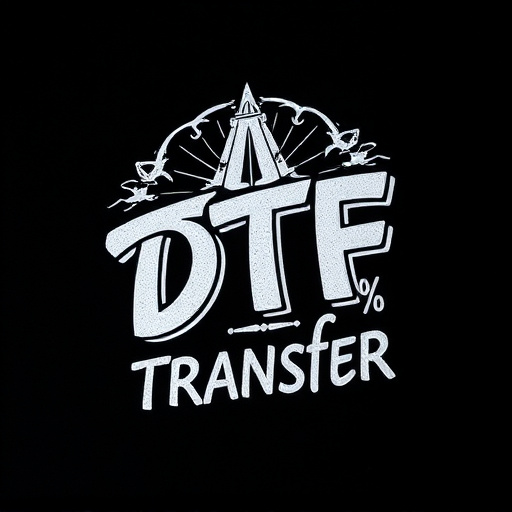Direct to Fabric (DTF) Transfer Technology is revolutionizing textile printing by enabling vibrant, durable designs on dark fabrics. This method uses heat presses and specialized inks to produce high-quality prints suitable for various fabrics, from cotton to polyester. DTF's versatility allows businesses to cater to diverse markets, preserving design quality after repeated washes. Its ability to deliver rich colors on dark backgrounds and create sharp details makes it ideal for custom t-shirts, fashion garments, and home décor. Key factors for successful DTF printing include high-quality transfer films, precise print alignment, strong ink adhesion, and proper fabric pre-treatment. Choosing DTF inks tailored to dark fabrics and testing small swatches ensures optimal results. Future innovations in DTF technology focus on richer colors, improved durability, advanced design precision, streamlined production, eco-friendly inks, and enhanced customization.
“Unleash the power of vibrant visuals on dark fabrics with DTF (Direct-to-Fabric) Transfer technology. This innovative process has revolutionized printing, allowing for stunning, long-lasting designs on a variety of materials.
In this comprehensive guide, we’ll explore the mechanics behind DTF transfers, uncover why they excel in producing bold colors on dark surfaces, and provide an in-depth look at each step of the printing process. From selection of the right transfer to application techniques, get ready to master the art of DTF Printing.”
- Understanding DTF Transfer Technology: A Comprehensive Overview
- The Appeal of Vibrant Colors on Dark Fabrics: Why DTF Stands Out
- Key Components of a Successful DTF Printing Process
- Choosing the Right DTF Transfer for Your Material and Design
- Application Techniques to Ensure High-Quality DTF Prints
- Future Trends and Innovations in DTF Transfer Printing
Understanding DTF Transfer Technology: A Comprehensive Overview

The DTF (Direct to Fabric) Transfer technology is a game-changer in the textile printing industry, revolutionizing the way vibrant and durable designs are applied to dark-colored fabrics. This innovative process eliminates many of the challenges associated with traditional printing methods on dark garments, ensuring that every print pops with vivid colors and crisp details.
DTF involves transferring ink directly onto the fabric’s surface using a heat press. Unlike screen printing or digital printing, which might struggle with opacity on darker materials, DTF leverages specialized inks designed to adhere strongly and reproduce rich, vibrant DTF prints. The technology has gained immense popularity for its ability to produce high-quality, long-lasting DTF transfers suitable for a wide range of fabrics, from cotton to polyester. This versatility makes it an attractive option for businesses catering to various markets, ensuring that every design, from subtle monograms to bold graphics, appears stunning and remains intact even after multiple washes.
The Appeal of Vibrant Colors on Dark Fabrics: Why DTF Stands Out
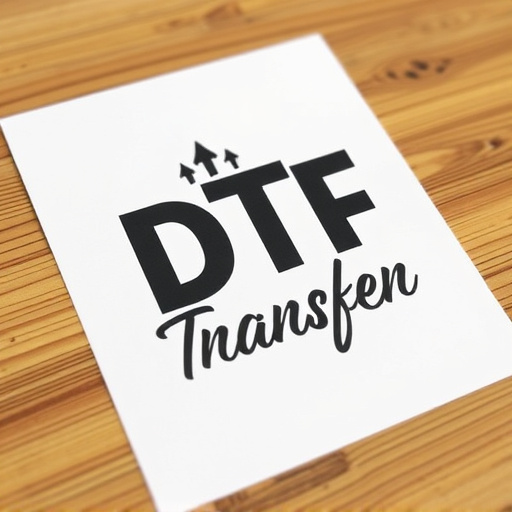
The allure of vibrant colors on dark backgrounds has captivated designers and fashion enthusiasts for years. In the realm of fabric printing, Direct to Fabric (DTF) transfers have emerged as a game-changer, offering a unique and eye-catching solution. DTF stands out due to its ability to produce vivid, high-quality prints on even the darkest of fabrics. Unlike traditional methods that might struggle with deep hues, DTF printing ensures that rich, intense colors are accurately replicated, creating a visually stunning effect.
This technique involves applying a specially formulated ink directly onto the fabric’s surface, which then sets and fuses into the fibers. The result is a print that appears almost painted, with sharp details and a depth that catches the eye. Whether it’s for custom t-shirts, fashion garments, or home décor items, DTF transfers allow creators to bring their designs to life in a way that conventional printing methods simply can’t match.
Key Components of a Successful DTF Printing Process

The success of a DTF (Direct to Fabric) printing process hinges on several key components that work together seamlessly. First and foremost, the quality of the DTF transfer film is paramount. This thin, flexible material acts as the medium between the design and the fabric, ensuring precise color transfer and vibrancy, especially on darker fabrics. The print itself should be high-resolution and precisely aligned to avoid smudging or misregistration.
Additionally, the choice of ink plays a crucial role in achieving vibrant DTF prints. Specialized DTF inks are designed to bond strongly with various fabric types and colors, offering exceptional color saturation and durability. The printing machine, whether it’s a flatbed or a roller, must be calibrated accurately for optimal results, ensuring even ink distribution and minimal bleed. Finally, the fabric itself should be pre-treated appropriately to enhance adhesion and prevent smudging during the transfer process.
Choosing the Right DTF Transfer for Your Material and Design

When selecting a DTF (Direct to Fabric) transfer for your project, understanding your material and desired design is paramount. Different fabrics have varying textures and absorbency levels, which significantly impact print quality. For instance, dark-colored fabrics like black or deep navy present unique challenges due to their high contrast with the transfer ink. Choosing a DTF transfer designed specifically for dark fabrics ensures optimal visibility and vibrancy of your design.
Consider the type of fabric you’re working with—cotton, polyester, or a blend—as well as the level of detail in your design. For intricate patterns or fine lines, opt for high-quality DTF transfers that offer superior ink resolution. Additionally, testing a small swatch before printing an entire batch can help you gauge the print’s effectiveness and make adjustments to achieve the desired DTF prints.
Application Techniques to Ensure High-Quality DTF Prints
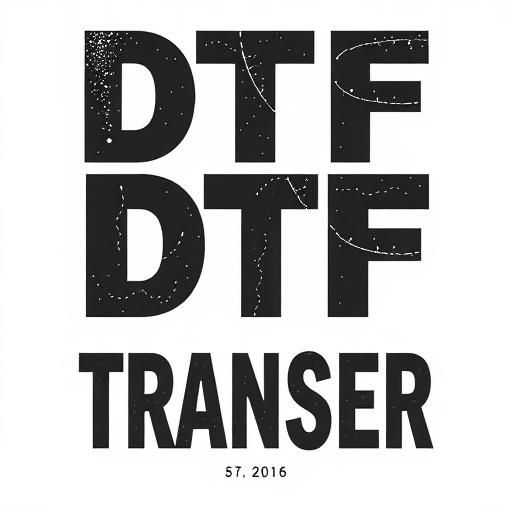
To achieve high-quality DTF (Direct to Fabric) prints on dark-colored fabrics, several application techniques can make or break the final result. One crucial method is pre-treating the fabric to ensure optimal adhesion of the transfer. This step involves cleaning and preparing the surface to create a smooth base for printing. Pre-treatment also helps in enhancing the color vibrancy of darker fabrics by improving their ability to absorb dye from the DTF transfer.
Another essential technique is using precise printing settings and high-quality inks. Adjusting the print head pressure, temperature, and speed according to the fabric type and ink composition can significantly impact the print quality. Additionally, choosing vibrant, color-rich inks specifically designed for DTF transfers will ensure that the designs appear as intended on dark backgrounds. Regular calibration of printing equipment is also vital to maintain consistent and high-quality DTF prints.
Future Trends and Innovations in DTF Transfer Printing

The future of DTF Transfer Printing promises exciting innovations that will further revolutionize the textile industry. As technology advances, we can expect to see improvements in ink formulations, offering even richer colors and enhanced durability on various fabric types, especially those with darker hues. Researchers are exploring new methods to create more intricate and precise designs, allowing for greater customization and unique, eye-catching DTF prints.
One emerging trend is the integration of digital technologies, such as advanced printers and cutting-edge software, to streamline the production process. This includes the potential use of 3D printing techniques for creating custom templates, enabling designers to bring their most creative concepts to life. With an increasing demand for sustainable practices, there might also be a shift towards eco-friendly DTF inks and methods, ensuring the industry becomes more environmentally conscious without compromising on vibrancy or quality.


